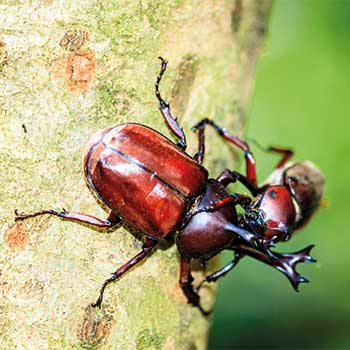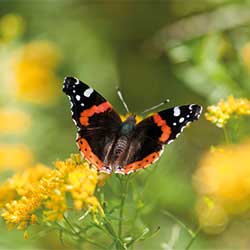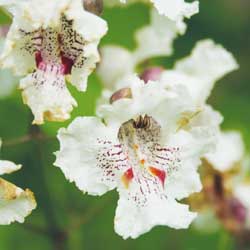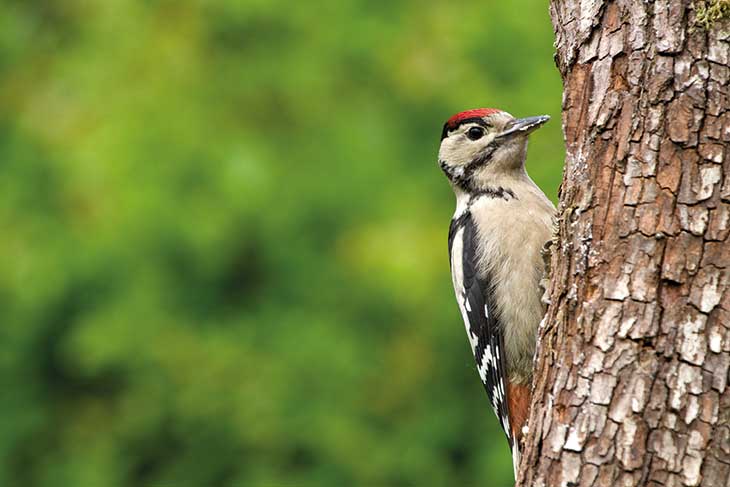Summer life in the arboretum
Our summer is famously unpredictable with sunny, cloudy, rainy and stormy days all part of the mix. But, like it or not, it’s all part of our climate!
Our moody summers allow trees and flowers to flourish for bees to collect pollen. The rain fills ponds for kingfishers and herons to feed, and provides a watery home for over 1,000 species of animals.
The trees are in their full majesty with beautiful shades of green punctuated by bursts of colour, such as the whites, pinks and purples of magnolias and the pinks and reds of the Japanese maples. The white flowers on our horse chestnut collection outside the Great Oak Hall, are also an impressive sight early in the season.
June

The stag beetle is a magnificent beastie that can grow over 75mm in length. The male’s antlers can be as long as their body. Stag beetle larvae are laid in dead wood where conditions are moist. They can take several years to fully develop, before finally emerging to live for
just a few weeks, in which they must find
a mate and start the next generation.
July

The Red Admiral, with its velvety black wings and striking red and white bands, is primarily a seasonal visitor from Europe. A few are sighted in the early months of the year, meaning that this butterfly is now considered a resident.
August

The Indian bean tree, Catalpa bignonioides has large numbers of small white and yellow flowers and bright green foliage. Found on Main Drive, this beautiful tree’s flowers can be so numerous that they almost entirely obscure the leaves. Contrary to the name, this tree is not from India but from the eastern United States, and doesn’t grow beans!
Amongst the many trees enjoying early summer colour is the handkerchief or dove tree, Davidia involucrata on Main Drive. This beautiful tree was discovered in China by Père David, a French missionary, in 1869 and introduced to the UK in 1904 by Ernest Henry Wilson. When bringing it back, Wilson survived a shipwreck and managed to save his precious cargo!
Summer at Westonbirt Arboretum is a plentiful time for birds. There’s a rich diet of insects on offer and a generous supply of fruits. Swallows nest around the many outbuildings, blackbirds rummage for tasty morsels on the ground and the colourful chaffinch is always busy. The jay, by far the most colourful member of the crow family, can be seen at work. Keep your eyes and ears peeled for the tapping of the greater spotted or green woodpecker, or a glimpse of any of these beautiful birds.
Have you spotted any summer wildlife at Westonbirt? Share your images on Instagram using #FriendsOfWestonbirt or email them to us
